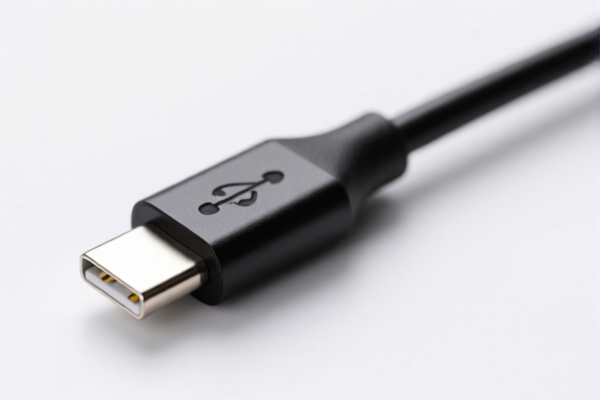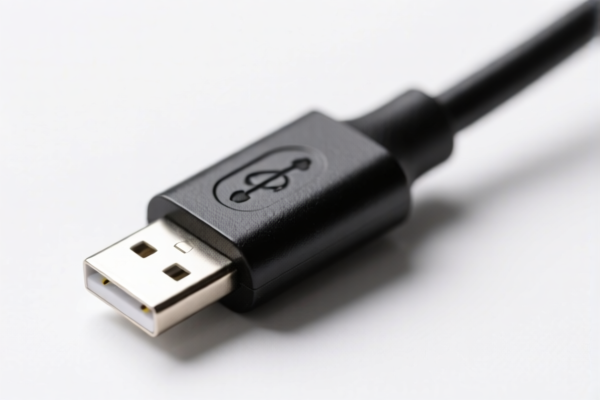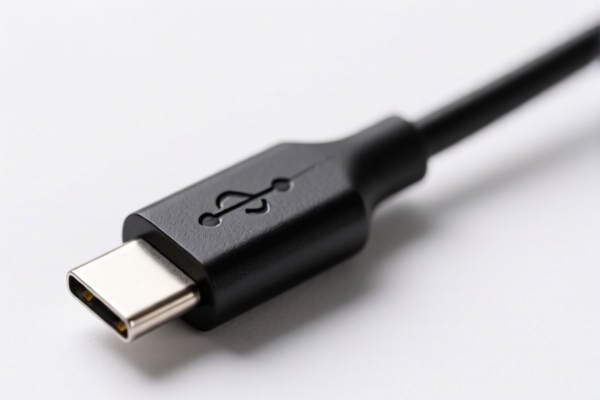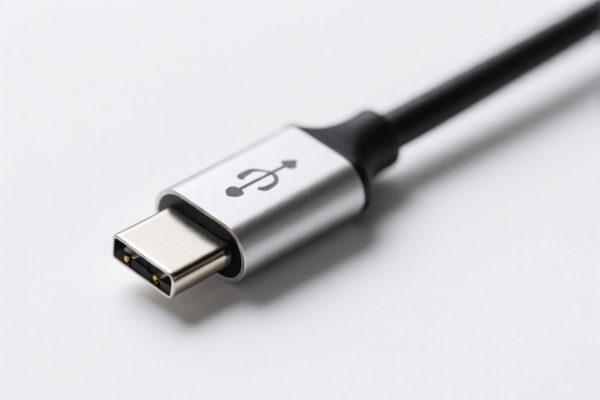| HS Code | Official Doc | Tariff Rate | Origin | Destination | Effective Date |
|---|---|---|---|---|---|
| 8544421000 | Doc | 55.0% | CN | US | 2025-05-12 |
| 8544422000 | Doc | 55.0% | CN | US | 2025-05-12 |




USB Type-C Cable
A USB Type-C cable is a 24-pin USB connector type that is reversible and increasingly common in modern portable devices. It has replaced older USB standards such as USB-A, Micro-USB, and Mini-USB due to its numerous advantages.
Material:
- Connectors: Typically constructed from nickel-plated brass or aluminum alloys for durability and conductivity.
- Cable: Usually utilizes copper wiring for data and power transmission, encased in a flexible plastic (PVC, TPE) or braided nylon sheath for protection and strain relief. Higher quality cables may incorporate shielding (aluminum foil, braided mesh) to reduce interference.
Purpose:
The primary purpose of a USB Type-C cable is to facilitate data transfer and power delivery between devices. It supports a wide range of functionalities, including:
- Data Transfer: Transferring files, photos, videos, and other data between computers, smartphones, tablets, and other peripherals.
- Power Delivery (PD): Charging devices at faster rates and powering larger devices like laptops.
- Video Output: Transmitting video signals to external displays via DisplayPort Alternate Mode (DP Alt Mode).
- Audio Output: Supporting digital audio transmission.
Function:
USB Type-C cables function by transmitting data and power through a set of pins within the connector. The cable supports various USB protocols, including:
- USB 2.0: Basic data transfer speed (480 Mbps).
- USB 3.1 Gen 1 (USB 3.0): Faster data transfer speed (5 Gbps).
- USB 3.1 Gen 2: Even faster data transfer speed (10 Gbps).
- USB 3.2: Further increased speeds, utilizing multiple lanes for up to 20 Gbps.
- USB4: Based on Thunderbolt 3 protocol, offering up to 40 Gbps.
- Power Delivery (PD): Supports charging power up to 240W (with EPR - Extended Power Range) depending on the cable and device capabilities.
Usage Scenarios:
- Charging Smartphones and Tablets: The most common application.
- Connecting to Computers: Transferring files, connecting peripherals (keyboards, mice, external hard drives).
- Connecting to External Displays: Outputting video to monitors and TVs.
- Connecting to Docking Stations: Expanding connectivity options with multiple ports.
- Connecting to Headphones and Earbuds: Digital audio transmission and charging.
- Connecting to VR Headsets: Data and power transfer for virtual reality experiences.
Common Types:
- USB-C to USB-C: Connects two devices with USB-C ports.
- USB-C to USB-A: Connects a USB-C device to a device with a USB-A port.
- USB-C to HDMI: Connects a USB-C device to an HDMI display.
- USB-C to DisplayPort: Connects a USB-C device to a DisplayPort display.
- USB-C to Ethernet: Provides a wired network connection.
- USB-C Hubs/Adapters: Offer multiple port options (USB-A, HDMI, Ethernet, etc.).
- USB-C Charging Cables: Specifically designed for charging, often with reinforced construction.
Key Considerations:
- Data Transfer Speed: Cables support different USB protocols, affecting data transfer speeds.
- Power Delivery (PD) Support: Ensure the cable supports the required power delivery for your device.
- Cable Length: Longer cables may experience signal degradation.
- Build Quality: Reinforced cables with durable connectors offer better longevity.
- eMarker Chip: Higher power cables (60W+) require an eMarker chip for safety and compatibility.
USB Type C cables fall under the category of insulated electric conductors, specifically cables with connectors. Based on the provided information, the following HS codes are relevant:
-
8544421000: This HS code covers insulated wire, cable (including coaxial cable), and other insulated electric conductors, whether or not fitted with connectors; optical fiber cables, made up of individually sheathed fibers, whether or not assembled with electric conductors or fitted with connectors: Other electric conductors, for a voltage not exceeding
1,000 V : Fitted with connectors: Fitted with modular telephone connectors. While this specifically mentions modular telephone connectors, it broadly covers electric conductors with connectors under 1,000V.- 85: Electrical machinery and equipment; their parts; sound recording or reproducing apparatus, television-image transmission or reception apparatus, and parts thereof.
- 44: Electric conductors.
- 42: Other electric conductors, for a voltage not exceeding 1,000 V.
- 10: Fitted with connectors: Fitted with modular telephone connectors.
-
8544422000: This HS code covers insulated wire, cable (including coaxial cable), and other insulated electric conductors, whether or not fitted with connectors; optical fiber cables, made up of individually sheathed fibers, whether or not assembled with electric conductors or fitted with connectors: Other electric conductors, for a voltage not exceeding
1,000 V : Fitted with connectors: Other: Of a kind used for telecommunications. This is a broader category for electric conductors with connectors under 1,000V, specifically those used for telecommunications.- 85: Electrical machinery and equipment; their parts; sound recording or reproducing apparatus, television-image transmission or reception apparatus, and parts thereof.
- 44: Electric conductors.
- 42: Other electric conductors, for a voltage not exceeding 1,000 V.
- 20: Fitted with connectors: Other: Of a kind used for telecommunications.
Tax Information:
Both HS codes 8544421000 and 8544422000 share the following tariff details:
- Basic Tariff: 0.0%
- Additional Tariff: 25.0%
- Tariff after April 2, 2025: Additional Tariff of 30.0%
- Total Tariff: 55.0%
It is important to determine if the USB Type C cable is specifically used for telecommunications to accurately classify it under either 8544421000 or 8544422000.
Customer Reviews
No reviews yet.